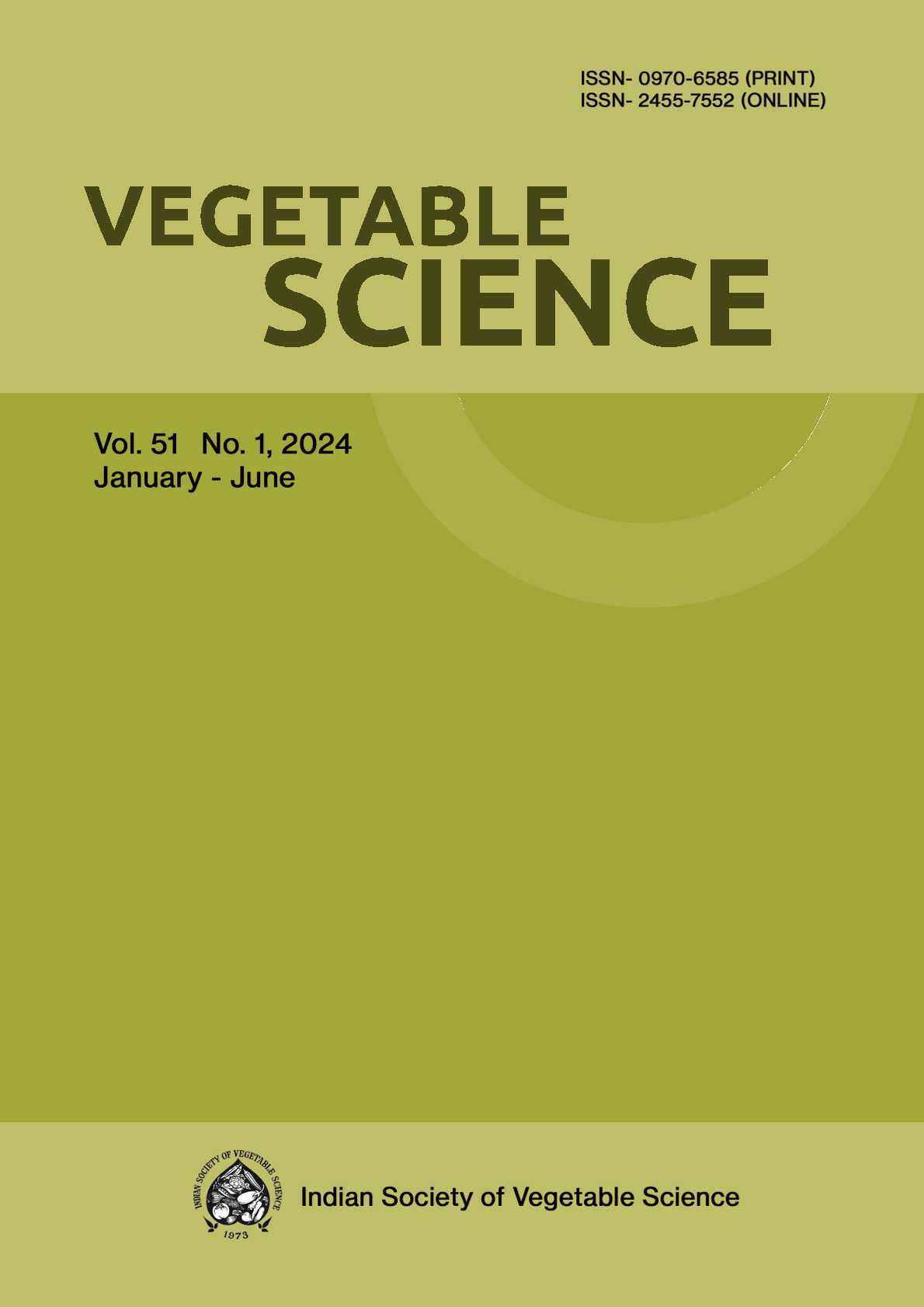Heterosis for economic traits in single cross-hybrids of radish (Raphanus sativus L.)
DOI:
https://doi.org/10.61180/Keywords:
Heterosis, Radish, Hybrid, CMS line, Hybrid vigourAbstract
Field experiments were conducted during 2016-18 to estimate
the heterosis for economic traits in radish (Raphanus sativus
L.). The significant differences of mean squares among
parents and hybrids for various traits of economic
importance indicated the presence of sufficient variation.
Heterosis was observed to the tune of 22.6% for root length
followed by 22.4% for root weight, 21.5% for marketable
yield, 19.6% for shoot weight, 11.7% for shoot length, 8.3%
for days to maturity, 7.5% for number of leaf, 6.4% for root
diameter and lowest -1.6% for days to first harvesting. The
parents namely VRRAD-201 & VRRAD-4 as female and
VRRAD-90, VRRAD-216 & VRRAD-89 as male were found
to be superior general combiner and promising. However,
for marketable yield best five specific cross-combinations
were VRRAD-201×VRRAD-150 (78.8 t/ha) followed by
VRRAD-201×VRRAD-216 (76.0 t/ha), VRRAD-201×VRRAD-
90 (75.8 t/ha), VRRAD-201×VRRAD-89 (72.6 t/ha) and
VRRAD-4×VRRAD-150 (69.9 t/ha). In F1, leaf and root shape
showed dominance pattern as Lyrate > Entire > Sinuate type
leaf and Cylindric > Triangular type root, respectively.
Keeping in view the importance of marketable yield,
usefulness of CMS line and consumers’ preference altogether
three most promising F1 hybrids i.e. VRRAD-201×VRRAD-
150, VRRAD-201×VRRAD-216 and VRRAD-201×VRRAD-
90 have the potential for commercialization.
Downloads
Published
Issue
Section
License

This work is licensed under a Creative Commons Attribution-NonCommercial-NoDerivatives 4.0 International License.






